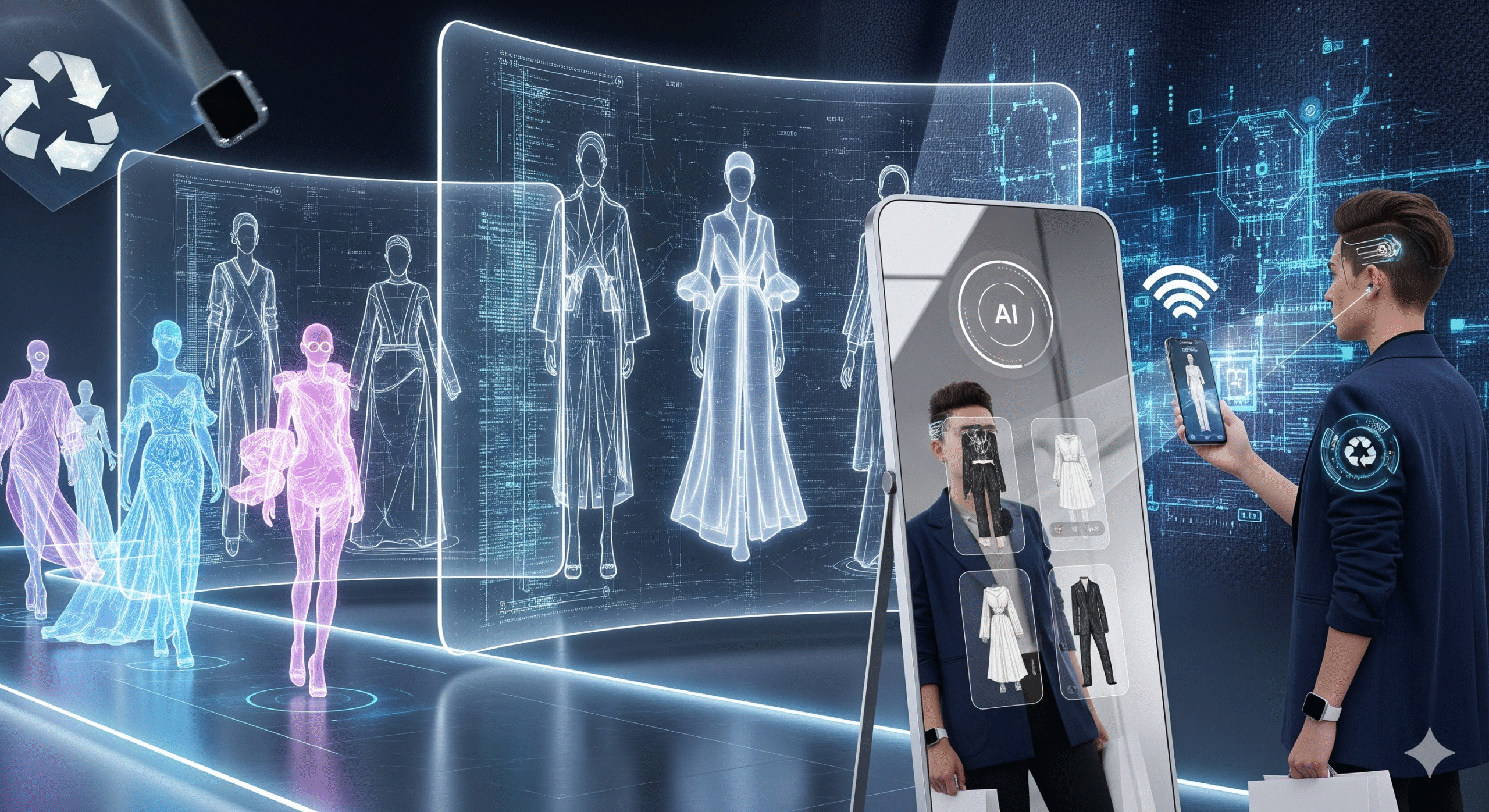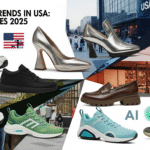Introduction
Fashion is no longer confined to fabric swatches, color palettes, and choreographed runway spectacles. By 2025, Artificial Intelligence (AI) has surged to the forefront as an indomitable catalyst reshaping the fashion sphere. From algorithm-driven couture and AI-powered shopping companions to hyper-personalized styling assistants, technology is weaving a future where apparel becomes more inventive, sustainable, and intricately attuned to individual desire.
This exploration uncovers how AI is transforming the genesis of design, reimagining consumer shopping journeys, and redefining how individuals craft their personal style through the lens of digital intelligence.
1. The Rise of AI in Fashion Tech
AI is no longer a futuristic whisper; it is the very mechanism by which titans of fashion operate. Brands such as Zara, H&M, Gucci, and Nike exploit its prowess to decipher oceans of consumer data, anticipate evolving appetites, and refine production cycles with surgical precision.
Principal arenas of AI integration include:
- Generative intelligence for boundary-pushing design.
- Adaptive eCommerce for bespoke shopping journeys.
- Virtual try-on chambers ensure accuracy of fit.
- Sustainability systems underpinned by data-led insights.
2. AI-Powered Fashion Design
Historically, design sprang solely from human imagination. Today, AI functions as an intellectual co-creator, detecting patterns, envisioning possibilities, and accelerating creative experimentation.
- Generative artistry: Platforms like MidJourney and Adobe Firefly conjure patterns, motifs, and prototypes in seconds.
- Trend divination: Algorithms scrutinize torrents of social chatter, search logs, and transactional records to forecast emergent aesthetics.
- Customization: Unique silhouettes, tailor-made fits, and individualized footwear emerge from AI’s ability to personalize at scale.
The union of human ingenuity with machine cognition births creations that echo both cultural desire and pragmatic demand.
3. AI in Shopping: A Smarter Retail Experience
The retail journey is shifting from tangible storefronts toward immersive digital realms, and AI is the unseen conductor orchestrating the shift.
- Precision recommendations: Amazon Fashion and ASOS algorithms tailor outfit suggestions with uncanny alignment to user histories.
- Digital stylists: Virtual advisors assemble ensembles reflecting unique taste profiles.
- Virtual try-on: Tools like Zeekit let consumers don garments in augmented space before committing.
- Conversational agents: AI chatbots resolve queries, propose alternatives, and even navigate returns.
The outcome is a commerce experience both frictionless and engaging, like walking through a curated gallery of one’s own preferences.
4. AI in Styling: Personalized Fashion Assistance
By 2025, AI will inhabit the role of an intimate style confidant tucked within your device.
- Styling platforms: Services such as Stitch Fix and StyleDNA tailor suggestions to body architecture, lifestyle, and occasions.
- Wardrobe orchestration: Apps archive, coordinate, and optimize personal collections to stave off redundancy.
- Augmented mirrors: Retail AR technologies project completely looks at shoppers in real time.
- Influencer augmentation: Creators employ AI to conceptualize looks, amplify campaigns, and engage audiences.
Rather than extinguishing personal taste, AI heightens it, polishing raw preference into refined expression.
5. Sustainability Through AI in Fashion
and the voracious churn of fast fashion. AI intervenes as a corrective force.
- Demand prophecy: Algorithms cut overproduction by forecasting need.
- Cognitive supply chains: Inventory and logistics synchronize with efficiency.
- Eco-conscious textiles: AI evaluates and suggests sustainable fabric choices.
- Circular fashion: Digital platforms enable recycling, resale, and renewal loops.
Here, AI and sustainability entwine, ensuring the industry evolves responsibly without forfeiting allure.
6. AI & Fashion eCommerce Platforms
Digital shopping’s horizon is unambiguously AI-driven.
- Visual search: A photo becomes the key, unlocking a catalog of similar products.
- Voice-led shopping: Spoken intent transforms into curated recommendations and swift orders.
- Elastic pricing: Algorithms recalibrate costs in real time, aligned with demand and stock.
- Endless assistance: Virtual concierges remain ever-present for advice and support.
The encounter is seamless, futuristic, and imbued with intuitive intelligence.
7. The Future of Fashion Shows & AI
Runways themselves are evolving beneath AI’s touch.
- Virtual spectacles: 3D-rendered collections transcend geography, open to all.
- Synthetic models: Digital icons like Shudu and Lil Miquela walk cyber runways.
- Predictive showcases: AI gauges which ensembles will captivate before they grace the stage.
These innovations render fashion shows more inclusive, accessible, and symphonic with technology.
8. Challenges of AI in Fashion Tech
Yet, as AI ascends, dilemmas trail in its wake.
- Ethical tensions: Machine-generated creativity raises questions of originality.
- Data sanctity: Hyper-personalized shopping leans heavily on sensitive consumer profiles.
- Economic hurdles: Independent labels often stumble under the cost of AI adoption.
- Creative integrity: Human vision must not be subjugated by automation.
Sustaining a balance between innovation and integrity remains paramount.
9. AI Trends in Fashion Tech for 2025 & Beyond
The tide of future-forward trends includes:
- Ultra-personalized wardrobe advisors.
- Platforms devoted to ecological responsibility.
- In-home augmented dressing rooms.
- AI-born digital influencers commanding online attention.
- 3D-printed apparel conceived through generative algorithms.
Fashion will persist as a dynamic confluence of individuality, technology, and vision.
Conclusion
The dawn of AI in fashion tech heralds a renaissance in how garments are conceived, acquired, and styled. From algorithmic ateliers producing forward-thinking designs, to AI stylists refining personal aesthetics, the entire industry is undergoing a radical evolution.
As 2025 deepens and beyond, fashion becomes not only more inclusive and data-driven but also aligned with ecological consciousness. In this new paradigm, clothing transcends mere ornamentation—it becomes intelligent, adaptive, and deeply personal.



